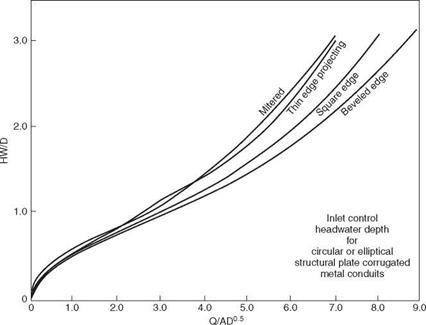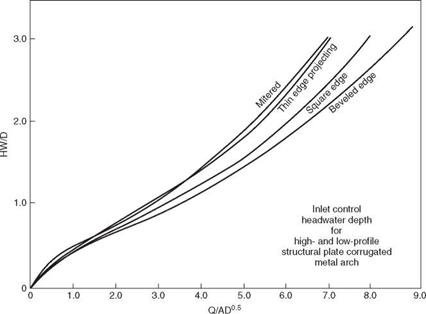Size Determination for Long-Span Structures
Because culvert shapes are so numerous and new shapes are often developed, design charts showing performance curves are not available for all culvert sizes and shapes. One example is long-span corrugated-metal sectional plate structures. Although the product is available in several cross-sectional shapes, performance curves are available only for circular or elliptical cross-sections (Fig. 5.17) and high – and low-profile arches (Fig. 5.18). These charts, which are for inlet control only, address four different inlet configurations ranging from mitered to beveled-edge ends. Because long-span structures are commonly used when headroom is low, they generally do not flow under head at design discharge but flow partly full.
The first step in using these charts is to obtain information on available sizes, including cross-sectional area A (ft2) and vertical height D (ft). For the design discharge Q (ft3/s), calculate Q/AD05 and read the value of HW/D at the intersection of the appropriate edge condition curve. Multiply by the depth (height) of the structure (D) to obtain the headwater depth HW and compare with the allowable design value. To consider a long-span structure under outlet control, an analysis including pressure flow and backwater calculation can be made. (See “Hydraulic Design of Highway Culverts,” HDS 5, FHWA.) The inlet and outlet control headwater elevations are then compared. The higher value is compared against the allowable elevation to determine if the size is satisfactory or if the process should be repeated.
|
|
|
FIGURE 5.18 Performance charts for high – and low-profile structural-plate arches under inlet flow control. (From “Hydraulic Design of Highway Culverts," Hydraulic Design Series No. 5, FHWA with permission) |








Leave a reply